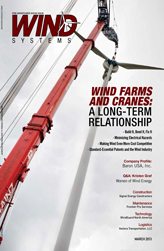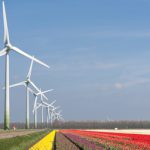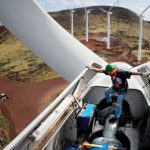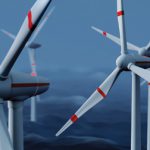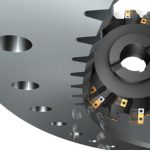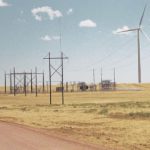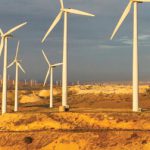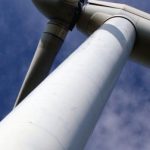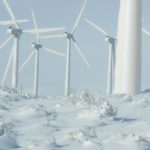Thanks to the fact that wind energy provides zero fuel and carbon costs as well as low operations and maintenance (O&M) costs, wind power stands a great chance to replace coal, gas, oil and other fossil-based fuels in the next few years.
As debated by some of the leading wind turbine and component manufacturers at the recent EWEA conference in Vienna in early February, wind has come a long way in terms of becoming a viable source of energy. Today, investors know that wind is one of the best energy sources because onshore wind has already reached grid parity. The costs for generating high-quality electricity from wind power have been cut considerably recently due to the concentrated efforts of the companies driving new technology and lower costs.
Although wind has gained a firm position in the energy mix of many countries, such as Denmark and Germany, there is still room for improvement when it comes to lowering the costs of energy generated from wind power before it will become an unquestionable winner.
Raising the Cost Advantage of Wind
For wind to become even more cost competitive, manufacturers need to continue to focus on four areas: decrease capital investment, reduce equipment operation and maintenance costs, and increase the amount of energy produced.
The good piece of news to start with is that wind energy has built-in competitive advantages with its zero fuel and carbon costs.
So let’s examine how the other areas can be addressed to make wind energy an even more viable energy option than it already is currently.
Optimize Total Life Cycle Costs
Investing in wind energy demands a long-term perspective. Costs associated with wind energy, the initial capital investment and the equipment lifetime operation and maintenance (O&M) costs all need to be optimized to ensure a sustainable and profitable outcome.
The initial capital investment costs combined with O&M costs result in total life cycle costs (TLC). When considering TLC gives a much clearer long-term picture of the benefits that wind energy can bring to the conversation surrounding energy sources.
Looking at how initial capital investment and O&M costs contribute separately to the TLC of wind energy, we can see the overall financial impact these two areas have on TLC.
Capital Investment
The initial capital investment required to create a new source of wind energy production is large. This may lead an investor to the conclusion that purchasing lower-cost equipment in the initial stage is the smartest choice. This choice, however, while reducing costs in the short term, may very well lead to greater TLC in the long term. This is due to the equipment lifetime O&M costs associated with cheap equipment. Also, cheaper equipment may be much more costly to install and may be much more difficult to connect to power grids. These hidden costs can add up quickly. Therefore, a somewhat higher initial capital investment in advanced technology is one way of reducing TLC in the long term, making wind energy more cost competitive overall. Table 1
Operation and Maintenance
The O&M costs over the lifetime of wind energy equipment can be optimized when the equipment used is designed and built with a goal of minimal maintenance and high serviceability in mind. Achieving these two goals leads to the avoidance of unexpected downtime and costly failures.
There are also other ways to optimize O&M costs of wind energy equipment. For example, if maintenance routines are scheduled to match the season when the wind is at its weakest, the maintenance will be cheaper and more efficient.
To reduce O&M costs, investors in wind energy solutions can choose to purchase equipment that has proven its ability to perform in all types of environments with minimal maintenance required.
Ways to Minimize Total Life Cycle Costs (TLC)
At The Switch, we begin each project with a view to minimize total TLC. We start by optimizing the design for each wind energy customer through our unique design process that involves close collaboration with our customer. The equipment is then built based upon these designs so that the final result is a perfect match for the specific environment in which the equipment will be operating. This extra emphasis on proper design and development ensures that we can significantly lower O&M costs over the equipment’s lifetime.
Some of our other solutions to lower TLC have included carefully calculated magnet placement in the generator to minimize their use, special high-humidity systems to avoid disturbances, and optimized weight-efficiency ratios to best match the desired turbine design. Also, our remote equipment monitoring system and 24/7 technical support allow our customers to easily implement a proactive service plan, avoiding unexpected downtime and costly failures.
The FusionDrive™, our smart gear and generator combo designed with Moventas, improves the entire drive train design by removing all high-speed components that are more prone to failure. Similar to our other products, FusionDrive™ enables our customers to enjoy longer lasting equipment that requires less maintenance, and therefore costs less over the long run.
Extend the Lifetime of Equipment
Also tied into the cost competitiveness of wind energy is the lifetime of the equipment that is utilized. If a piece of equipment can be purchased at a low cost but has a very short lifetime, then in reality that piece of equipment is not as cheap as it initially appeared. This is due to the fact that every time a piece of equipment fails, it must be replaced, which of course increases overall O&M costs. If the lifetime of this same piece of equipment can be extended, then wind energy becomes a more cost-competitive option. Figure 1
To illustrate, let’s examine the case of the typical wind turbine, which currently has an estimated operating lifetime of 20 years. If this same wind turbine could be made to last longer and run more efficiently — even if it costs slightly more — it will cost less in the long run. In other words, it will lead to a decrease in the total cost of implementing a wind energy solution.
Extending Operation While Boosting the Quality of Electricity
Extending the lifetime of wind energy equipment will increase the cost competitiveness of wind as an energy source. While the typical wind turbine has a lifetime of 20 years, current designs from The Switch have already been calculated to lengthen this time frame by three to five years.
Revving-up Annual Energy Production
There are two factors that lead to increased annual energy production (AEP): greater availability and greater efficiency. For wind energy, the easiest route to increasing AEP through greater availability is to ensure that a wind turbine’s blades are constantly rotating. To achieve greater efficiency, the focus should not be on operating at peak power — as all wind turbines experience periods of slow or no winds — but rather the focus should be on the amount of time a wind turbine spends generating electricity over all wind speeds.
First, to address AEP, all of our products are built based on a highly serviceable design, which minimizes the need for maintenance and increases production time. For example, permanent magnet generator (PMG) technology is now rapidly moving mainstream, because it ensures fewer failures. This is due to the fact that there are no wearing parts, and it requires less maintenance. Also, our PMG drivetrains average 97 percent availability or higher in any type of operating condition.
In addition, in order to increase efficiency and therefore AEP, the focus should be on the amount of time a wind turbine spends generating electricity over all wind speeds. This is an area in which our PMGs excel. PMGs demonstrate higher efficiency at partial loads where they spend the greatest number of their operating hours, resulting in a proven higher efficiency curve. PMG efficiency has been calculated to be 5 to 8 percent higher than that of conventional double-fed induction generator (DFIG) technology.
Boost the Quality of Electricity
Besides looking at ways to simply cut costs, the competitiveness of renewable energy solutions such as wind energy can be increased by focusing on the quality of electricity it feeds into the grid. News from recent incidents of wind turbines not connected to the grid has overshadowed some of the earlier favorable progress. Now the industry and governments alike are responding — with stricter and more uniform grid code regulations.
Due to our highly reliable and efficient products, we are also able to help our customers boost the quality of electricity that they produce. The Switch renewable energy solutions have always demonstrated superior grid connection behavior. For example, our full-power converters support fault ride-through and fulfill the world’s strictest grid code requirements, including the German BDEW 2008. Our 3 MW units have been tested on site and passed all grid code requirements, even for the latest Chinese regulations. Low flicker, electrical noise emission and THD of <1.5%, the lowest of any in the entire industry, also support the final quality of electricity fed to the grid.
Financial Figures Support New Technology
To get an even clearer picture of how The Switch is making wind energy more cost competitive, we can examine some real numbers. There are essentially two ways to analyze any major capital investment. Both of these financial analysis methods aim to give the investor a complete understanding of the long-term profitability of the investment. Figure 2
Payback
The payback method of analyzing a financial investment is a simple and easy method to use when analyzing small, repetitive investments. Payback determines the time required for the return on a given investment to repay the total initial investment amount. In the case of wind turbines, an average payback period is commonly calculated to be 8 years. The payback method factors in tax and depreciation rates, but it disregards interest rates, inflation, financial risks and other factors.
Still there are some shortcomings with the payback method. This method does not accurately measure the total income over the actual lifetime of the investment, due to the fact that wind turbines normally have an operational life of 20, and even 25 years as in the case with The Switch, and not just 8. This short-term view means that a huge amount of potential revenue and profit that is being generated beyond 8 years is left out of the equation.
Levelized Cost of Energy or Net Present Value
Levelized cost of energy (LCOE) is our formula, and it is simply one way to calculate net present value. LCOE is the sum of all capital expenditures (Capex) and operating expenditures (Opex) divided by the annual energy produced (AEP) over the lifetime of the investment. LCOE is based on calculations that use cash flow and results in investment decisions that truly generate long-term value.
LCOE calculations take into account the initial wind turbine investment, the operations and maintenance costs as well as the income streams from generating energy and selling it to the grid. LCOE also factors in the value at the end of the turbine’s life, which could be positive or negative.
The fact that LCOE takes so many variables into account means that it is the most accurate and efficient way to measure an investment’s profitability over its entire lifetime.
Financial Comparison
The technology behind The Switch’s products reduces costs when compared with wind energy technology, which in turn leads to greater profits now and in the future. This also leads to greater cost competitiveness overall for wind as an energy solution.
To illustrate the financial impact of new technology versus conventional technology, we have provided a simplified cost comparison. This comparison is between a double-fed induction generator (DFIG) and a PMG, using the LCOE financial analysis method.
As can be seen from the table, although the initial investment cost is somewhat higher for a PMG wind turbine, low voltage ride-through (LVRT) capability offers a built-in advantage of PMG, eliminating the need and costs of extra filtering and capacitors. In addition, maintenance costs are significantly lower over the lifetime of the PMG equipment. Plus, PMG efficiency can easily be calculated to be 5 to 8 percent higher than DFIG. When comparing the total of all capital expenditure and maintenance costs with the overall efficiency and energy produced, PMG is the undisputable clear choice. Therefore, technology with a high efficiency ratio considerably reduces risk and increases bankability.
Also, although the upfront costs of key components such as PMGs and full-power converters (FPC) may appear to be higher than the DFIGs, in reality the difference in the initial Capex can be negligible for a 2MW wind turbine. The true costs come into play when connecting to the grid. For example, DFIG drivetrains need additional VAR support to make a connection to the network.
Taking a longer-term view on results is the most financially sound approach to analyzing renewable energy investments. To reach the most optimal financial decision with long-term capital investments, The Switch advises using the LCOE approach and pairing it with the payback method to see the complete picture.
Calculating the costs of DFIG and PMG-FPC: Although the initial investment in a DFIG turbine appears lower, the price of LVRT filtering and capacitors must be added. Also, VAR support must be provided to connect DFIG turbines to the grid. In comparison, PMG technology includes inbuilt LVRT and reactive power compensation.
Wind Energy is Becoming Ever Cheaper
Wind energy technology is constantly advancing and becoming simultaneously more cost effective. The industry at large can be pleased by the progress made to date, especially now that onshore wind power has reached grid parity. Still there is much more to do to drive costs down — not only with onshore solutions, but also especially as offshore starts to pick up speed.
By simply taking a longer-term perspective concerning results and profitability, investors will find that wind energy is an energy solution with a strong future.
As a provider of key components based on advanced technologies for wind power production, we at The Switch are on a mission to help lower the cost of wind energy and to make it a more viable and competitive power source going forward.



















